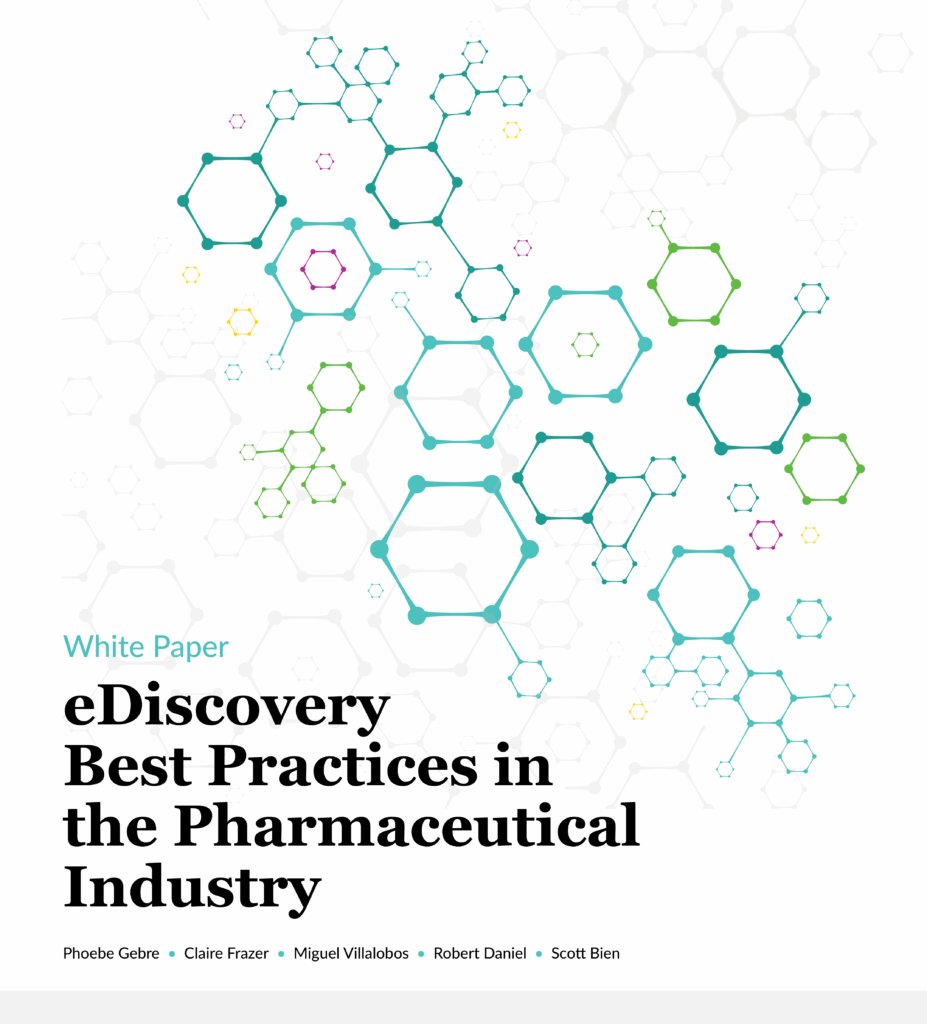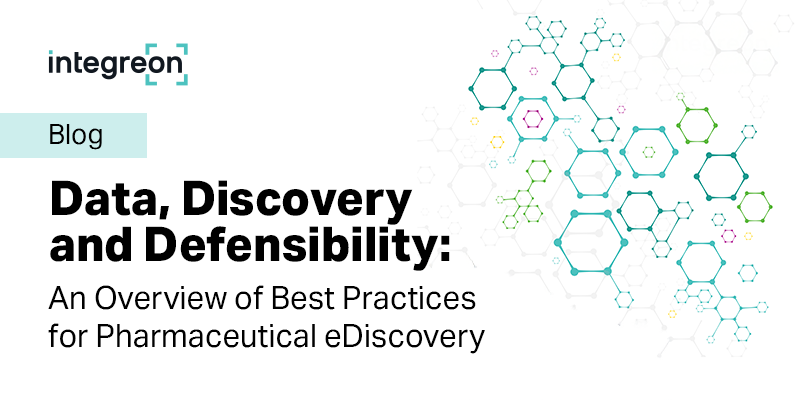Key Takeaways
Strengthen information governance with clear policies for data classification, retention, and legal holds to meet industry regulations and ensure defensibility.
Embed compliance and collaboration across legal, IT, and compliance teams to maintain data integrity and reduce regulatory risk.
Optimize eDiscovery globally with advanced technology, AI-assisted review, and transparent cost tracking for efficiency and compliance.
In today’s digital landscape, data is both an asset and a liability. The sheer scale, variety and velocity of data creation mean that legal teams are now managing evidence that is constantly in motion, generated in emails, chats, cloud drives, collaboration tools, and mobile devices. In addition, the pharmaceutical industry vast amounts of sensitive data flow daily across research, clinical trials, regulatory filings, and commercial operations often in multiple jurisdictions, each with strict privacy and compliance requirements. As a result, pharmaceutical companies must adopt robust, proactive strategies to manage electronically stored information (ESI) during litigation, investigations, and regulatory reviews.
This article outlines key best practices that enable pharma organizations to stay compliant, reduce costs, and protect reputation in the face of increasing discovery challenges.
Implement Strong Information Governance
The volume and complexity of corporate data have exploded in recent years, with the average organization using more than one hundred different SaaS applications. This means that relevant information may live across structured databases, messaging platforms, and personal devices. Therefore, an effective eDiscovery program begins with strong information governance (IG). Pharmaceutical companies should implement comprehensive policies that classify, retain, and dispose of data in line with industry regulations such as FDA 21 CFR Part 11, HIPAA, and GDPR.
Key actions include:
- Data classification and metadata tagging to ensure records are easily retrievable.
- Retention and disposal policies that eliminate redundant or obsolete data while preserving regulated information.
- Legal hold processes that preserve relevant information when litigation is anticipated.
- Cross-functional ownership across legal, compliance, IT, and business units so that there is shared responsibility for data lifecycle management.
- Audit trails that document all preservation, access, and disposal activities to ensure transparency and defensibility.
Well-structured governance reduces the burden of identifying and collecting records during eDiscovery and enhances overall corporate data hygiene.
Ensure Compliance with Regulatory Requirements
Pharma eDiscovery must be grounded in regulatory alignment. Companies operate under multiple frameworks, such as FDA, EMA, HIPAA, GDPR, CCPA, SEC, DOJ, and others, that mandate strict data handling, privacy, or reporting obligations.
Best practices include:
- Automated compliance monitoring to track data access and modifications in real time.
- Defensible chain of custody to maintain integrity from collection through review.
- Cross-functional collaboration among legal, IT, compliance, and records management.
- Regular training and tabletop exercises to ensure readiness for litigation holds or regulatory audits.
By embedding compliance into workflows, companies can minimize legal exposure and respond quickly to regulators’ demands.
Manage Cross-Border eDiscovery Effectively
Global operations create additional complexity, as data privacy and sovereignty laws differ across jurisdictions. Non-compliance with frameworks such as GDPR, China’s PIPL, or Brazil’s LGPD can result in significant fines and reputational harm.
To mitigate risks:
- Map data locations and risks across global systems and custodians.
- Leverage localized hosting and review to comply with data localization laws.
- Use Standard Contractual Clauses (SCCs) and safeguards like encryption or anonymization for cross-border transfers.
- Apply pseudonymization to protect personally identifiable information (PII) while maintaining document relevance.
- Engage regulators and local counsel early to demonstrate transparency and manage expectations.
Aligning with The Sedona Conference’s International Litigation Principles ensures that discovery efforts balance legal obligations with privacy protections.
Streamline the eDiscovery Lifecycle
Given the volume and sensitivity of pharmaceutical data, discovery processes must be systematic and technology-driven:
- Targeted collection of data from systems like LIMS, ELNs, and regulatory databases, ensuring forensic defensibility.
- Processing and hosting with deduplication, OCR, and secure cloud-based platforms.
- Early Case Assessment (ECA) frameworks to rapidly analyze data, align strategy, and assess risks.
- Document review optimization, using repeatable workflows, predictive coding, continuous active learning (CAL), and even generative AI to accelerate analysis.
- Quality control and privilege protection embedded throughout review to reduce errors and protect sensitive data.
- Standardized redaction protocols for HIPAA-protected health data, trade secrets, and privileged communications.
- Defensible production and privilege logs that meet regulatory and adversarial scrutiny.
Each stage should be supported by clear documentation, ensuring that all discovery actions remain defensible.
Track Work and Costs Transparently
The Uniform Task Based Management System (UTBMS) codes provide a useful framework for tracking eDiscovery activities and associated costs. By requiring outside counsel and vendors to align billing with L600 series codes (covering legal holds, collection, processing, hosting, document review, redaction, and privilege review), pharma companies gain greater visibility into resource allocation and can benchmark spend across matters.
In Summary
Pharmaceutical companies cannot afford to treat eDiscovery as a reactive process. By implementing robust information governance, aligning with global regulatory frameworks, and adopting structured, defensible, and technology-enabled workflows, organizations can meet legal obligations while protecting sensitive patient and proprietary data.
These best practices not only mitigate risk but also enhance operational efficiency, empowering pharma companies to manage discovery with confidence in a rapidly evolving regulatory and legal landscape.
Download your copy of eDiscovery Best Practices in the Pharmaceutical Industry.

White Paper Overview
This white paper covers best practices for eDiscovery in the pharmaceutical industry, focusing on challenges posed by the vast volume and sensitivity of electronically stored information (ESI) generated during drug development, clinical trials, and regulatory compliance.


